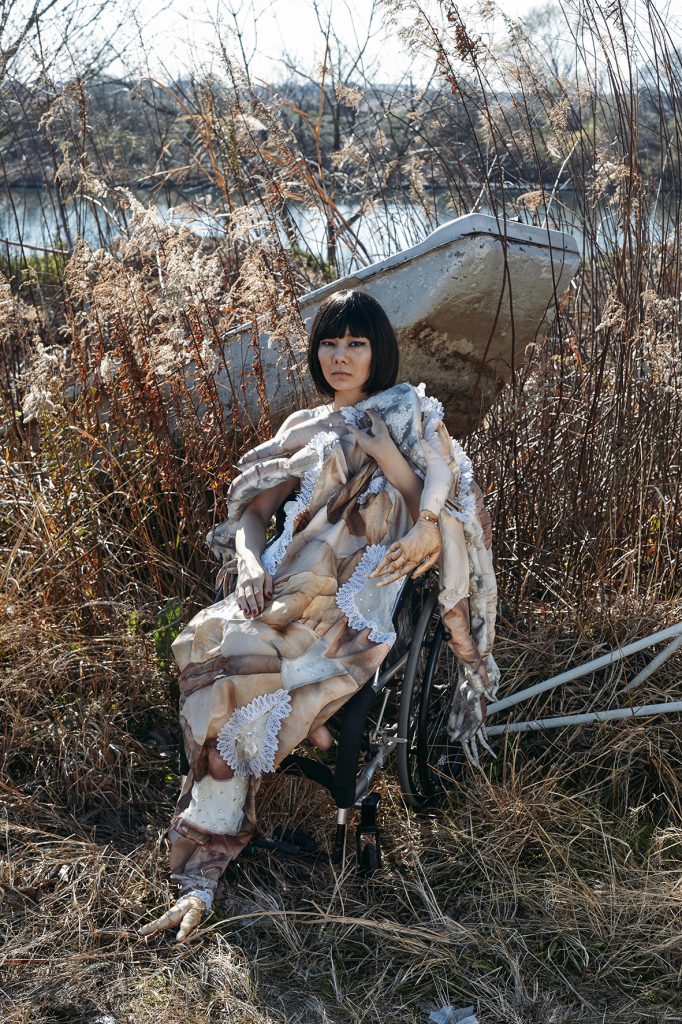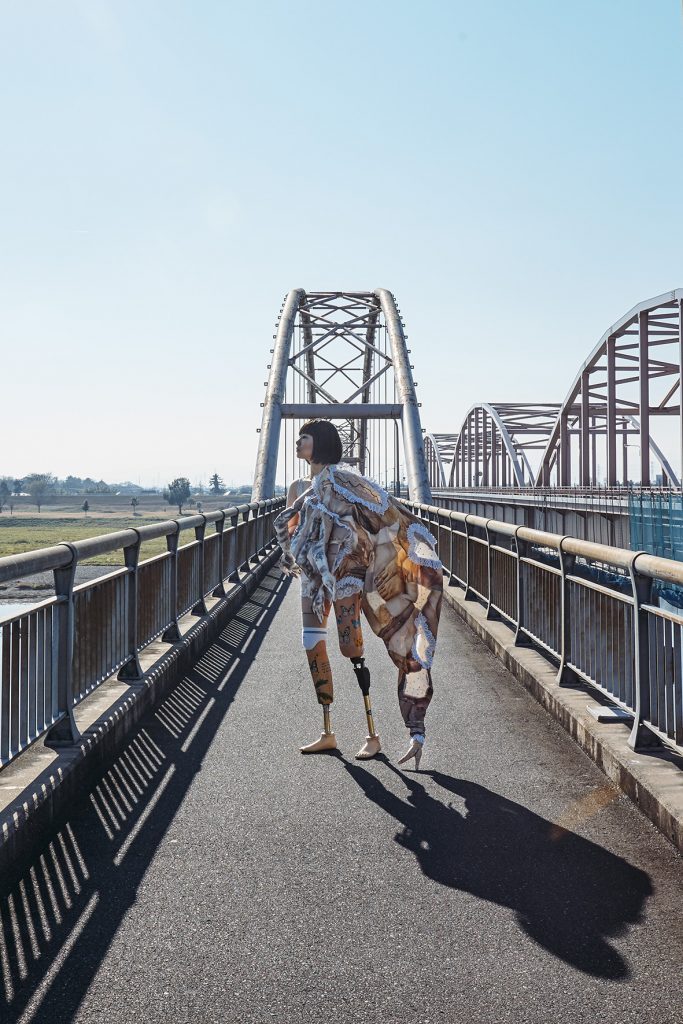by Emanuela Bagoi
_
For decades, philosophy has given little importance to the body, while it is has been a central issue in contemporary society, as much as the thought is: the body is the boundary that determines the individuals, which characterizes them in their uniqueness. But is it possible to go beyond the drawn limit of the human body in search of one’s own identity?
Thanks to medicine and technology we are able to modify it and even overcome its borders, but it is not just a matter of science. Art has always exceeded the limit of the logical and the concrete, effectively helping to rationalize the body and corporeality. It sounds easy, but it isn’t.

There are artists like Mari Katayama who redraw boundaries using new aesthetic and narrative codes that distance themselves from the dominant gaze – which wants women to be beautiful, skilled, desirable and dependent on their appearance.
Born in 1987, with an hand with only two fingers and legs that she chose to amputate at the height of the shins due to a rare disease, the Japanese artist uses her body as an artistic expression, as a research and re-appropriation of self; she seduces, fascinates and provokes, turning it into a work of art.
Through photography and sculpture, Mari Katayama overcomes the boundary between human and post-human, that is the limit between the body we have and what happens outside of it. She uses her body as a field of experimentation.

In her On The Way Home project she transforms the prostheses – which she uses for walking – into intriguing and sensual accessories, and her wardrobe into wearable art. She uses scraps of fabric and culture to hand-sew all the arms and legs she needs to move the viewer’s gaze. She photographs herself above, below, next to the sculptural reproduction of her limbs; she escapes and gives herself in to the viewer’s eye with all the strength of vulnerability which, through art, she transforms into reality, dreams and desires. This way, she creates a unique and dreamlike world, where disability almost becomes a support for the imagination and where “normal” rules are to be challenged and redefined.

If the non-conforming body is generally hidden, Mari Katayama takes all the necessary space to affirm its identity and presence. She shows herself without fear, with all her poetics and sensitivity, aestheticizing her disability through art.
In a society where the cult of perfection is still very present, the Japanese artist emphasizes the importance of diversity as a true bearer of beauty.
Tiziano Scarpa describes the body as “the most unexplored of portable universes”, and he is right. Identity, including the bodily one, is constructed as in a game of mirrors in which there are essentially two gazes, ours and that of others. Mari Katayama uses the camera as a mirror itself, with which she creates many versions of herself bond together in a unique and wise identity. She goes beyond the boundaries of her own body also thanks to the affirmation of it, and she says it clearly: “you cannot separate my body from my art”.




